

The Tombs at Mycenae
and the items from the Museum recovered from the tombs
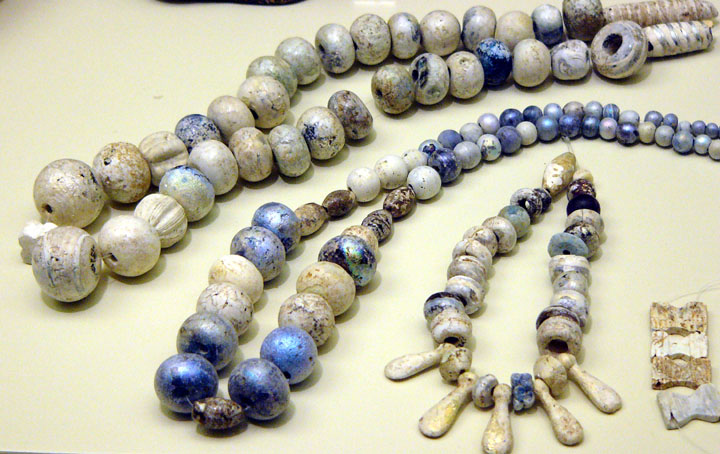
beads from Mycenae tombs
There are links between the Thera paintings and such items as earrings, necklaces, and metal vessels found in the royal Shaft Graves at Mycenae. Thera itself, however, had few valuables like metal; apparently the inhabitants had taken prized objects away. The Shaft Graves, in contrast, were packed with gold, silver, and bronze—almost nomadic in the obvious preference for portable gold and weapons.

shaft grave area at Mycenae
Two groups of Shaft Graves were discovered at Mycenae in different parts of a large cemetery area. The burials in them seem to have ranged over a period of 150 years, from shortly before about 1600 to the middle of the 15th century. Each group was eventually surrounded by a circular enclosure wall. The circle designated B, with the earliest burials, lay outside the limits of the later Bronze Age defenses, but the other circle, A, enclosing the richest burials in six large graves, was deliberately incorporated within them. The wealthy burials belonged to leading, if not royal, families of the place that would eventually supplant Knossos as the chief centre of the Aegean.
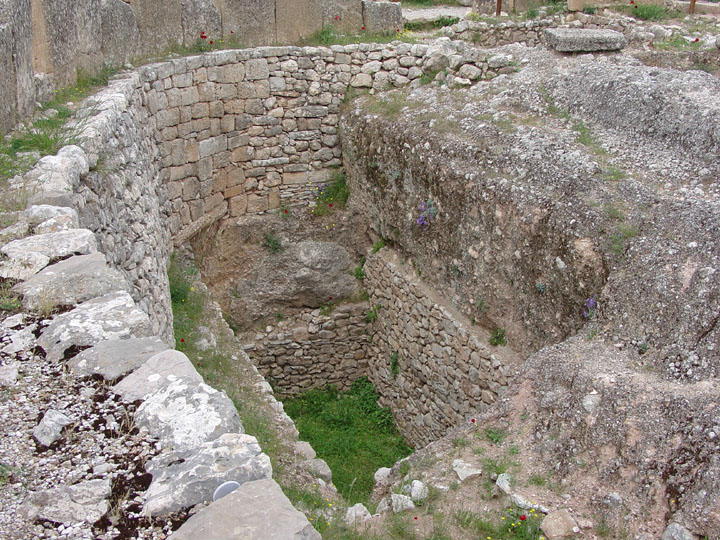
deep shaft grave
Schliemann excavated the graves of Circle A in 1876, but it was not until 1951 that Circle B was noted. These graves are capacious shafts cut in the rock, often with pebble floors and slab roofs. They were used for multiple burials over a course of at least several years, and the remains, including beef bones and oyster shells, give evidence of well-developed funeral rites.
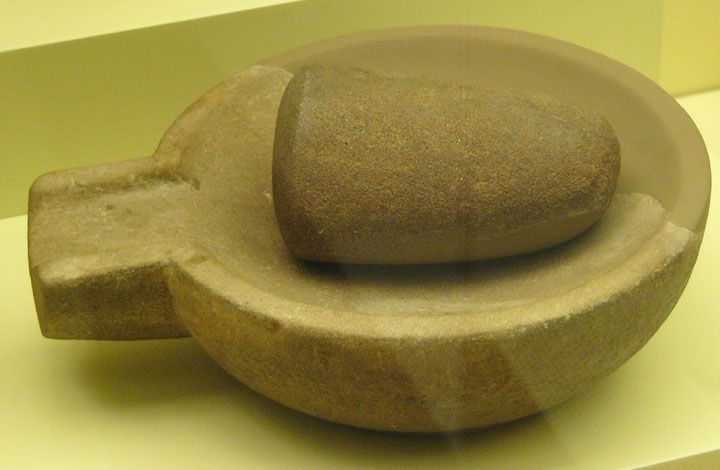
olive oil grinder
Both men and women were buried in the graves, many of which contained several bodies. After the bodies were placed in the graves, the stone-walled burial chambers were roofed with timbers, and the shafts above were filled again.
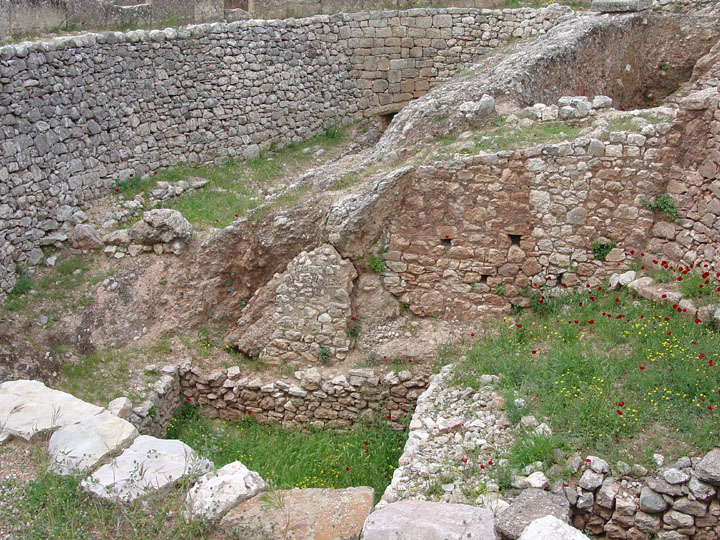
shaft grave site
Sometimes the remains of earlier burials seem to have been pushed aside to make room for later ones, but, if so, the shafts must have been laboriously reopened to admit new burials. Large stone slabs with carvings in flat relief had been set above some of the graves.
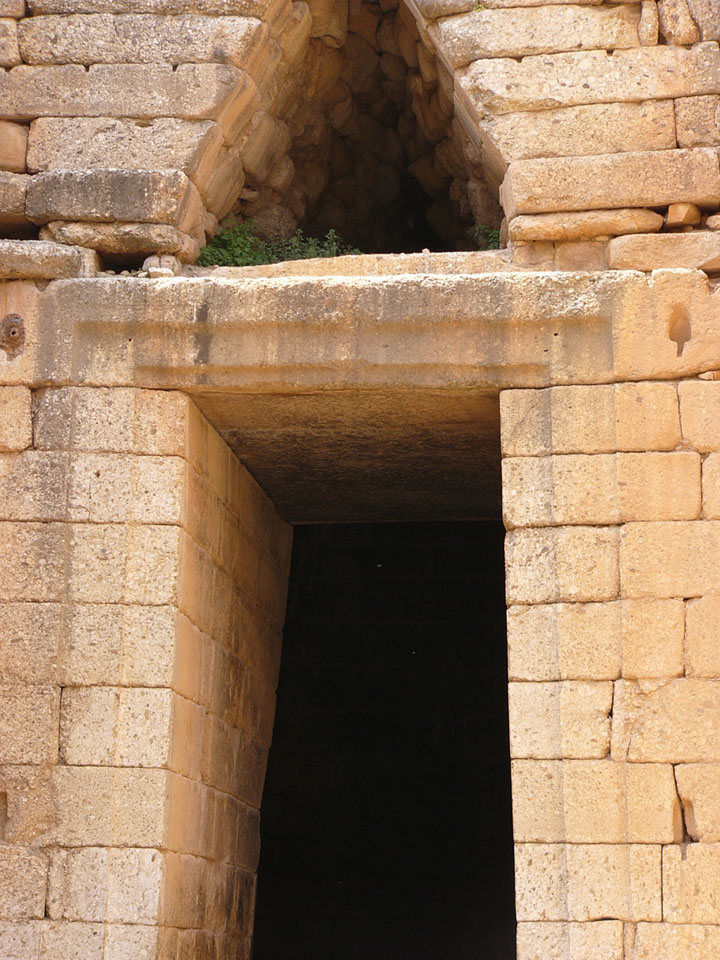
tomb entry doorway
The carvings include spiral designs and pictures of the dead riding in their chariots to war or to the hunt. They have vivid battle imagery—three stallions rearing, spears ground under chariot wheels, and a man falling headfirst from a chariot. In one case, the scene of a warrior driving a chariot over a fallen enemy encased in a shield seems to be reinforced by a scene just below it, a lion chasing a deer. This visual simile may be analogous to lion similes in Homeric epic. According to another interpretation, the dead were taking part in their own funeral games with chariot races as described in Homer. These tombstones provide the earliest evidence for chariots on the mainland.
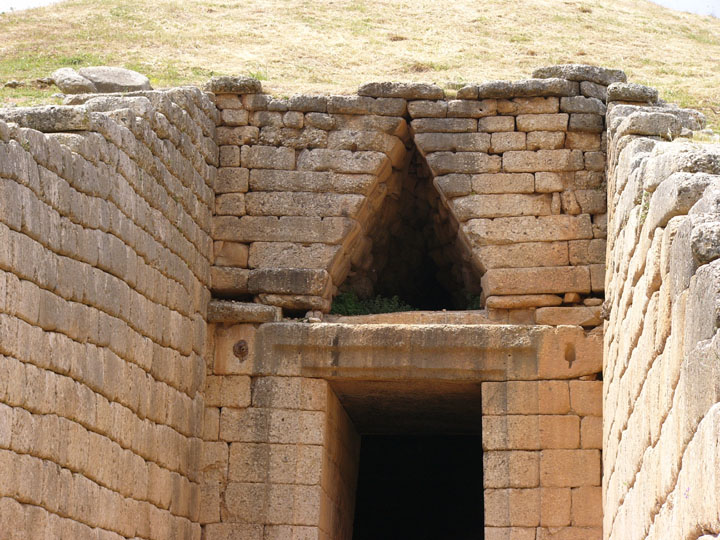
bee hive tomb
A fantastic array of gold and silver cups, jewelry, and dress ornaments had been placed with the dead, especially with those in the graves of Circle A. Golden diadems and elaborate hairpins decked the heads of women. Beads in necklaces were of amethyst, probably from Egypt, and amber, from the Baltic.
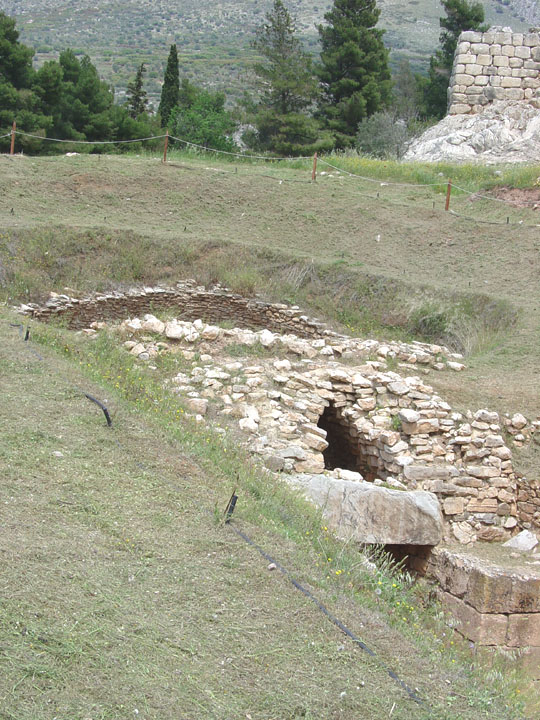
partially covered tomb
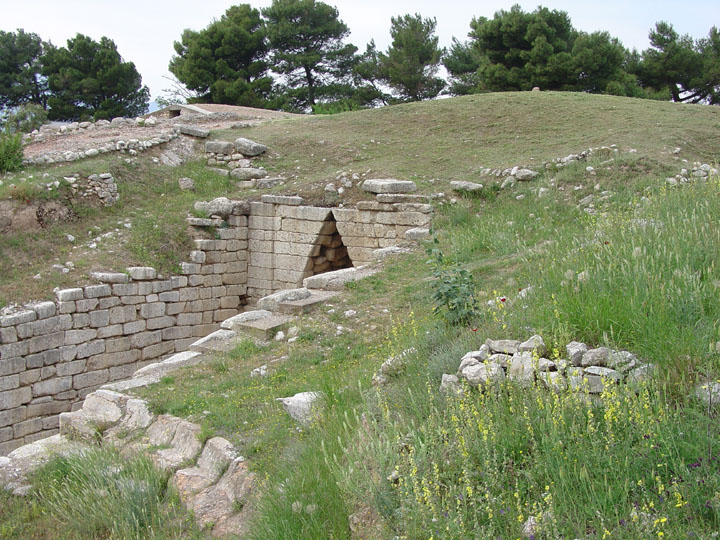
entry way to a tomb
The men were buried with supplies of bronze weapons, including great slashing knives and spearheads and two kinds of rapier-like swords, a mainland version and a Cretan version. Several swords are ornamented with gold-plated hilts and pommels of polished stone, ivory, or gold; some have gold predators at the hilt gripping the blades in their mouths. The blades may be ornamented with running horses, flying griffins, shields in the shape of a figure eight, or even lilies running down from hilt to tip.
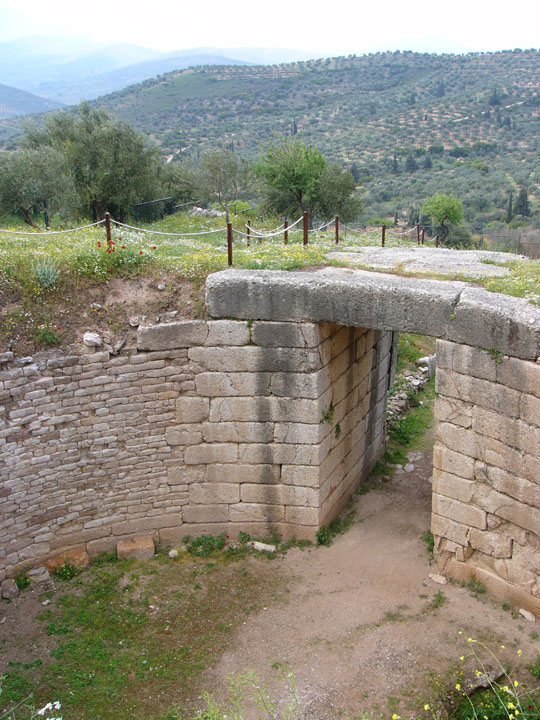
tomb where roof has already fallen and removed
The tremendous influence from Crete on these graves is visible in the metal cups, faience “sacral knots” (i.e., representations of a Cretan ritual object in the shape of a scarf with a looped knot and fringed ends), dolphin-appliquéd ostrich eggs, conch shells associated with ritual summoning, gold triple shrine facades, images of bulls with double axes between their horns, and imported pottery painted with plants.
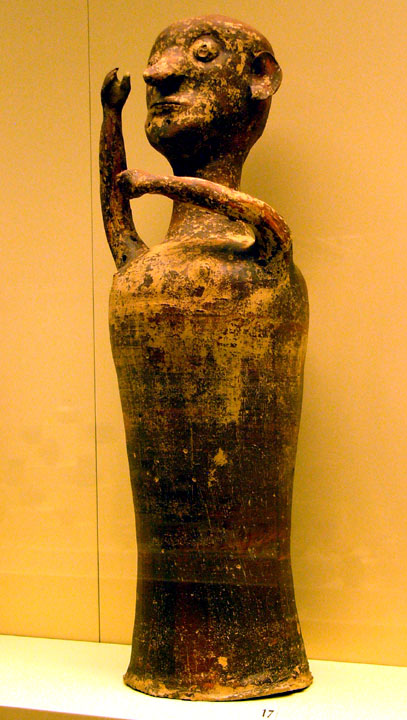
figure from a tomb
Beside them is an equal wealth of local art such as formal gold cups, gold worked in breathless surface patterns of lions, bulls, and plants, and dozens of lions twisted as ornament. There probably is a local iconography in the gold seals of duels, lion combat, chariot hunting, and a wounded lion trying to pull an arrow from his shoulder.
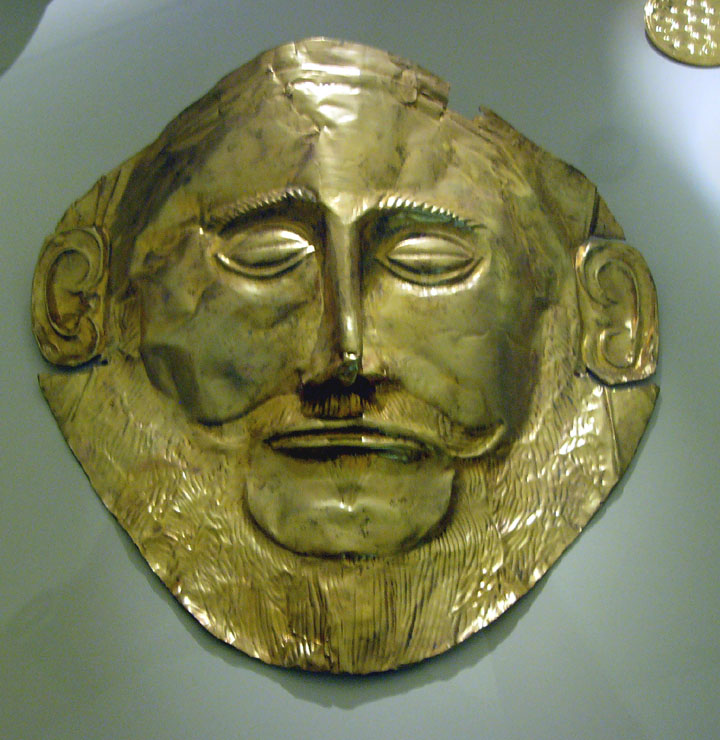
gold mask
Traveling artists may account for some of the similarities to Cycladic and Cretan art, but local armourers may also have wrought local metal into drinking cups. Covering the faces of some of the men were gold portrait masks showing them with beards and mustaches. In this they are like an amethyst “portrait” gem in Circle B of a bearded mature man. (Later studies of faces also seem to reserve the beard and mustache for important or powerful elders, although fashions change; servants and soldiers are normally beardless).

female figures
Women's costume
cannot be known from the remains, but it may have had the same range of tunic,
apron, and veil as in the Theran paintings, and the jewelry is impressive.
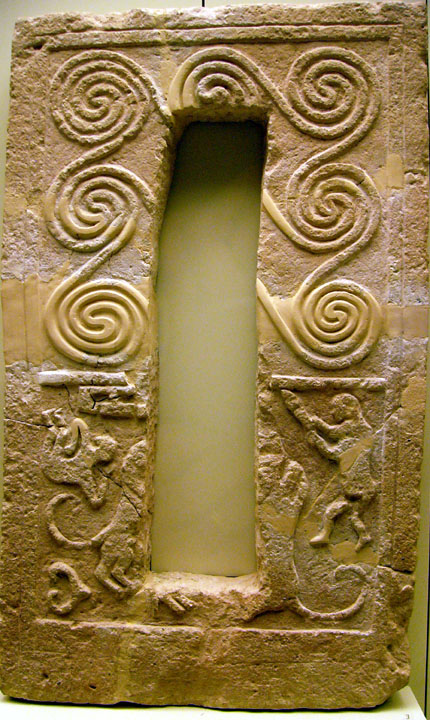
panel
In the 16th century BC, Mycenaean art was temporarily dominated by the influences of Minoan art. Cretan artists must have emigrated to the mainland, and local varieties of all the Minoan arts arose at Mycenae.
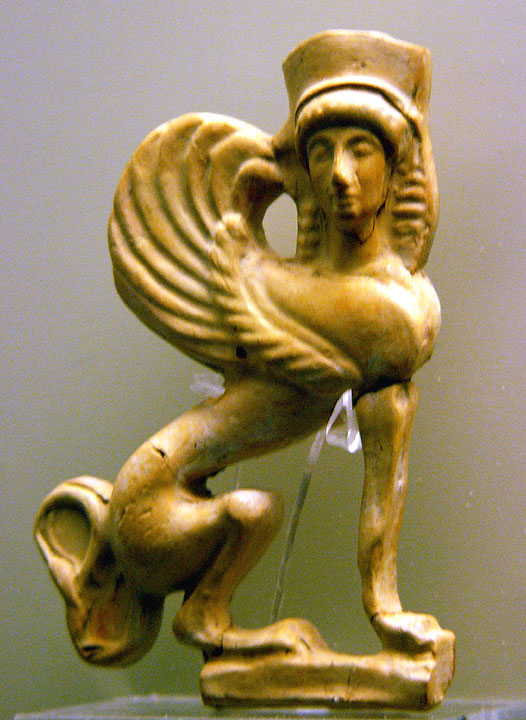
winged figure
Minoan naturalism and exuberance were tempered by Greek formality and sense of balance, which were already visible in Middle Helladic painted wares and were later to culminate in the splendid Geometric pottery of the Dipylon cemetery at Athens.
Text from the Encyclopedia Britannica
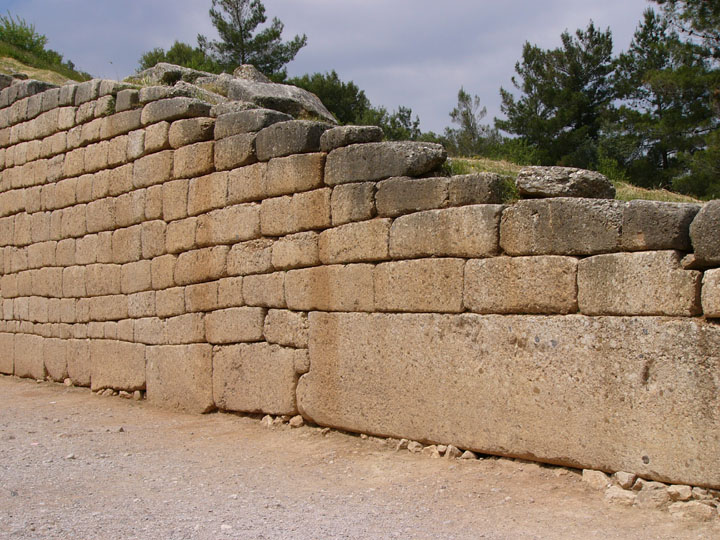
Mycenaean wall structure